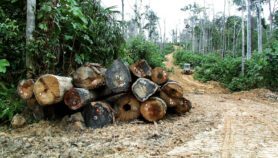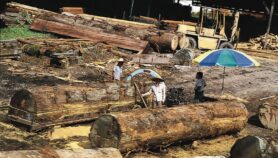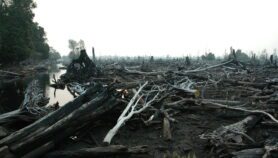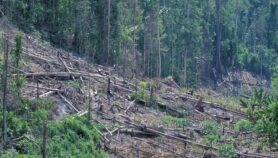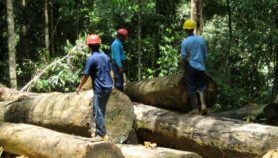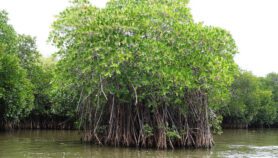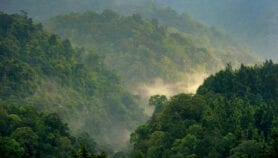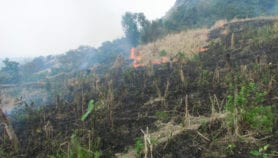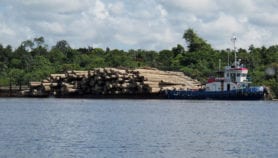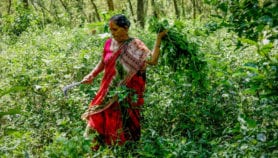29/03/22
Restoring peatlands ‘protects wildlife, reduces fire risk’
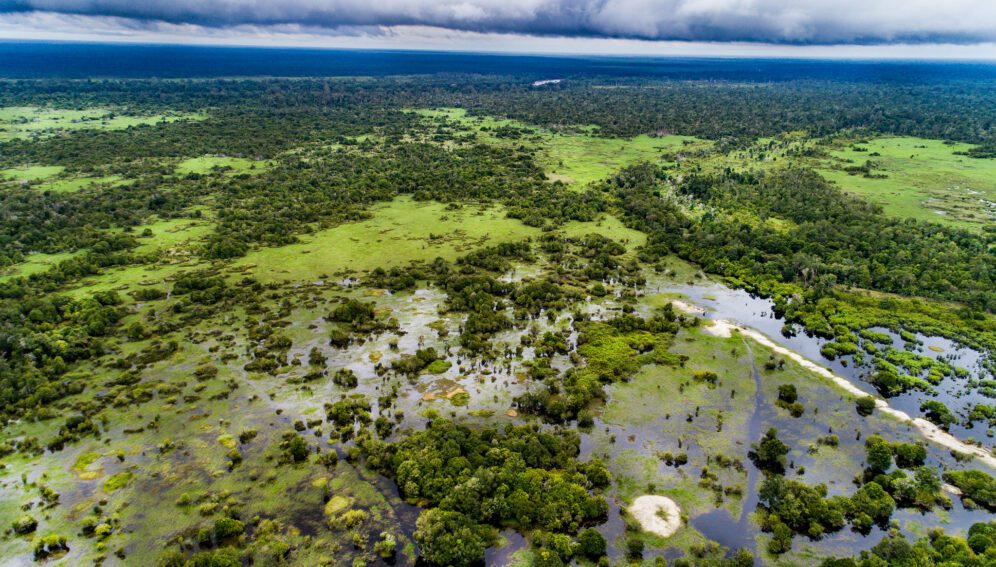
By: Sanjeet Bagcchi
Send to a friend
The details you provide on this page will not be used to send unsolicited email, and will not be sold to a 3rd party. See privacy policy.
[NEW DELHI] Re-wetting Indonesia’s peatlands, which are drained to cultivate oil palm, can result in better oil yields while also conserving biodiversity and livelihoods, new research suggests.
Peatlands are a kind of wetland that cover three per cent of the world’s land surface, according to the International Union for Conservation of Nature. Peat is formed of partially decayed vegetation where water-logged conditions slow down the decomposition of plants and organic matter.
Tropical peatlands in South-East Asia contain large below-ground carbon stocks and peat swamp forests are rich in unique and endangered biodiversity, according to the study published this month in the Journal of Applied Ecology.
“Our study helps shed light on options to improve the sustainability of cultivation on peatlands”
Eleanor Warren-Thomas
“Our study helps shed light on options to improve the sustainability of cultivation on peatlands,” says conservation scientist Eleanor Warren-Thomas, lead author of the study. “Smallholder producers in our study are managing to grow oil palm under much wetter conditions than typically reported from peatland oil palm.”
The research was conducted by the Indonesian Center for Agricultural Land Resources Research and Development and Jambi University in Indonesia, and the University of York and Zoological Society of London in the UK.
There are 14 million hectares of peatlands in Indonesia, accounting for nearly 23 per cent of the world’s total. They are mainly found on Borneo and Sumatra islands.
The study assessed peatland restoration activities in Indonesia, including re-wetting cultivated peatland areas by blocking drainage canals, and maintenance of water levels on drained peatlands and how these influence the viability of oil palms cultivated by farmers.
Fruit production of oil-yielding palm trees decreases with flooding for a long time, which is why peatlands are drained with canals in Indonesia and other oil palm growing countries in South-East Asia. But draining can cause the peat to emit carbon and make the dry peatlands prone to fires which lead to increased carbon emissions and toxic haze, threatening the lives of people and wildlife.
Restoring drained peatland involves a “rewetting” process whereby canals draining water away are blocked or filled in, reducing the likelihood of the peatlands catching fire, the researchers explain.
“Having the soil wetter will reduce fire risk, slow subsidence and carbon emissions — but in the long term these processes will still continue,” Warren-Thomas tells SciDev.Net. “We strongly encourage other peatland oil palm producers to share their data on production and water tables to further our understanding of this issue.”
Muh Taufik, a researcher at the IPB University in Bogor, Indonesia and who was not involved in the study, tells SciDev.Net that rewetting peatlands will benefit ecology and the environment. “This study provides evidence to balance the economy, livelihoods and ecology by maintaining water tables close to the surface.”
Peeyush Soni, an associate professor at the Department of Agricultural and Food Engineering at the Indian Institute of Technology, Kharagpur, says: “The development of large-scale oil palm plantations on peatlands needs serious consideration to minimise negative impacts to the environment and economic losses due to subsidence.”
This piece was produced by SciDev.Net’s Asia & Pacific desk.






